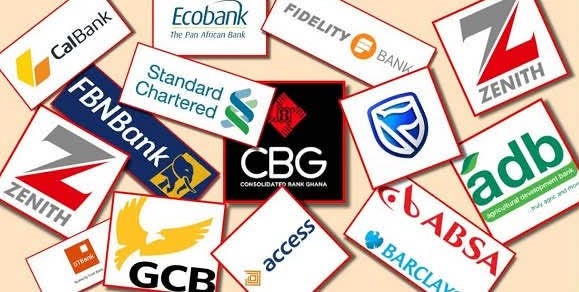Banking sectors’ total Non-Performing Loans (NPLs) reached GH¢20.7 billion at the end of June 2025 — a 1.3% increase from GH¢20.4 billion recorded a year earlier, a sign of a complex balancing act between profitability and asset quality.
Although the nominal stock of bad loans rose slightly, the data — contained in the Bank of Ghana’s (BoG’s) July 2025 Monetary Policy Committee (MPC) report — suggests that the overall quality of assets has improved.
The central bank attributed this improvement to faster growth in total loans compared to the rise in bad debts, resulting in a lower NPL ratio of 23.1%, down from 24.2% in June 2024.
When the fully provisioned loan loss category is adjusted for, the sector’s NPL ratio drops even further to 8.5% from 10.8% a year earlier.
This, according to the BoG, reflects a reduction in sub-standard non-performing loans and points to gradual recovery in credit risk management within the industry.
“The decline in the NPL ratio during the period under review is explained by the lower growth in the NPL stock relative to the growth in total loans,” the report noted.
Private sector drives NPL load
The private sector continues to dominate the industry’s NPL profile, accounting for 96.4% of total non-performing loans in June 2025, up from 95.6% a year ago.
In contrast, the public sector’s share declined from 4.4% to 3.6%, reflecting the persistent challenge of credit recovery from private borrowers.
Sectoral breakdowns reveal uneven patterns.
The commerce and finance sector saw a steep rise in its NPL ratio to 27% in June 2025, up sharply from 19.7% the previous year. The services sector followed with 25.7%, marginally down from 26.6%.
The manufacturing sector maintained its NPL ratio, showing no change compared to the same period in 2024.
Agriculture, forestry, and fishing also recorded higher bad loans, highlighting the ongoing risks in sectors vulnerable to climate shocks, price fluctuations, and limited insurance coverage.
Businesses blame arrears and economic strain
Industry analysts warn that the sustained rise in non-performing loans could undermine efforts to reduce lending rates, as banks typically price credit risk into interest charges.
Some affected businesses have told Joy Business that delays in loan repayment were not entirely their fault. They cited government arrears in the payment of contracts and delayed releases of funds for public sector projects as a major factor constraining their cash flow.
Central bank targets loan defaulters
In response, the Bank of Ghana has introduced new measures to contain bad loans and safeguard financial stability.
The central bank insists that the NPL-to-gross loan ratio should not exceed 10%, or such levels as the regulator prescribes.
Under the new directives, commercial banks must blacklist willful defaulters in their audited financial statements and provide a sectoral breakdown of their NPL exposures.
They are also required to restrict further credit to strategic or willful defaulters and share their identities with relevant financial oversight bodies.
The BoG has set a December 2026 deadline for all banks to bring their NPL ratios down to 10% of gross loans, emphasizing that persistent high levels of non-performing assets pose risks to profitability, liquidity, solvency, and overall financial stability.
Profitability remains strong
Despite the high stock of bad loans, the banking sector delivered impressive profits in the first half of 2025.
The industry’s profit-after-tax (PAT) rose by 32.6% to GH¢7.2 billion, compared to 25.5% growth a year earlier.
Similarly, profit-before-tax (PBT) jumped by 32.2% to GH¢10.8 billion, up from GH¢8.1 billion in June 2024.
The BoG attributes this strong performance to higher interest income and growth in other revenue streams, reflecting increased credit activity and improved operational efficiency.
The sector’s total assets and deposits also expanded during the review period, boosting liquidity buffers even as the BoG noted that liquidity levels had “moderated slightly.”
Solvency and efficiency indicators improve
The July 2025 MPC report shows a positive trend in the banking industry’s financial soundness indicators (FSIs).
Solvency ratios strengthened, and operational efficiency improved, although the central bank cautioned that the modest increase in NPLs still requires close monitoring.
The BoG noted that recapitalisation efforts, stronger credit underwriting standards, and intensified loan recovery actions are already underway.
These measures, it said, are expected to enhance the resilience of the financial system and ensure sustained stability in the medium term.
Outlook: Stable but watchful
The Bank of Ghana remains cautiously optimistic about the outlook for the sector.
It expects continued stability, supported by recapitalisation programmes, improved corporate governance, and stricter regulatory oversight.
However, the central bank also warned that persistent inflationary pressures, exchange rate volatility, and the slow pace of public sector payments could pose risks to asset quality in the months ahead.
For now, the message from the central bank is clear: while Ghana’s banks are more profitable than last year, they must urgently deal with the growing GH¢20.7 billion NPL mountain — or risk undermining the progress made in restoring confidence and stability in the sector.













